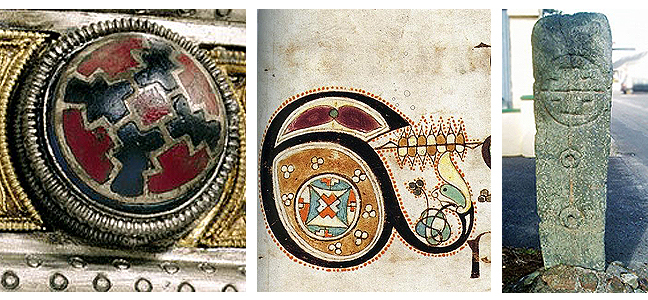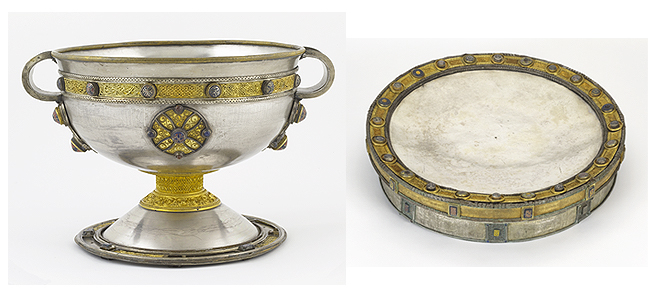Home / History / Irish History / The Book of Kells: Exploring an Irish Medieval Masterpiece / The artistic background of the Book of Kells
This article is from the free online
The Book of Kells: Exploring an Irish Medieval Masterpiece


Reach your personal and professional goals
Unlock access to hundreds of expert online courses and degrees from top universities and educators to gain accredited qualifications and professional CV-building certificates.
Join over 18 million learners to launch, switch or build upon your career, all at your own pace, across a wide range of topic areas.

 Fig 1. Glass ornamental stud on the Ardagh chalice c. 800 © National Museum of Ireland. Fig 2. Motif based on a glass stud on
Fig 1. Glass ornamental stud on the Ardagh chalice c. 800 © National Museum of Ireland. Fig 2. Motif based on a glass stud on  Fig 4. The Ardagh chalice © National Museum of Ireland. Fig 5. The Derrynaflan paten © National Museum of Ireland
Fig 4. The Ardagh chalice © National Museum of Ireland. Fig 5. The Derrynaflan paten © National Museum of Ireland
 Fig 6. Grave slab at Tullylease, Co. Cork. Photo: Rachel Moss. Fig 7. Decorated structural stone, possibly part of an altar or shrine, from Lemonaghan, Co. Offaly. Photo: Rachel Moss. Fig 8. The ‘Tower cross’, Kells, Co. Meath. Photo: Rachel Moss.
Fig 6. Grave slab at Tullylease, Co. Cork. Photo: Rachel Moss. Fig 7. Decorated structural stone, possibly part of an altar or shrine, from Lemonaghan, Co. Offaly. Photo: Rachel Moss. Fig 8. The ‘Tower cross’, Kells, Co. Meath. Photo: Rachel Moss. 





